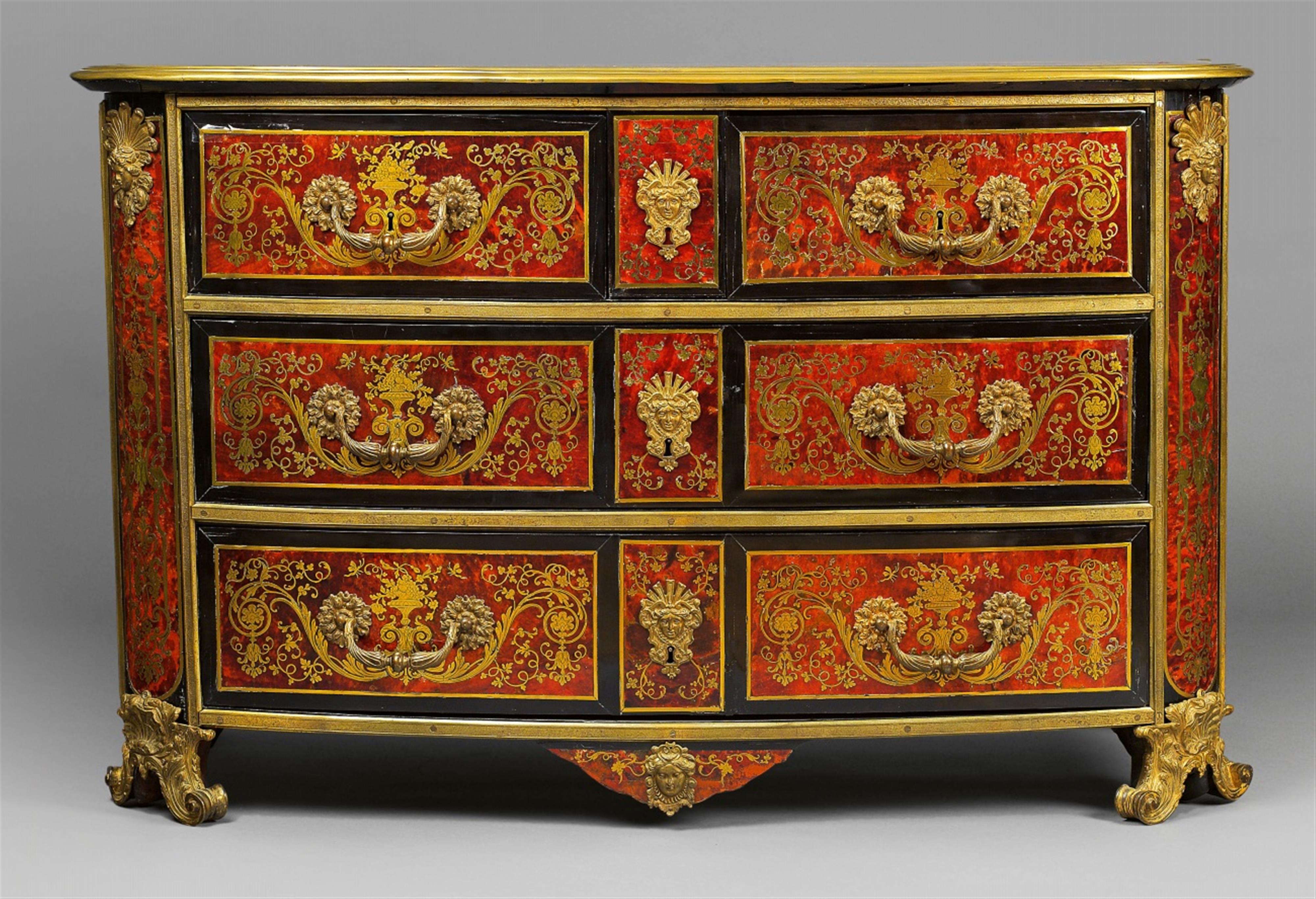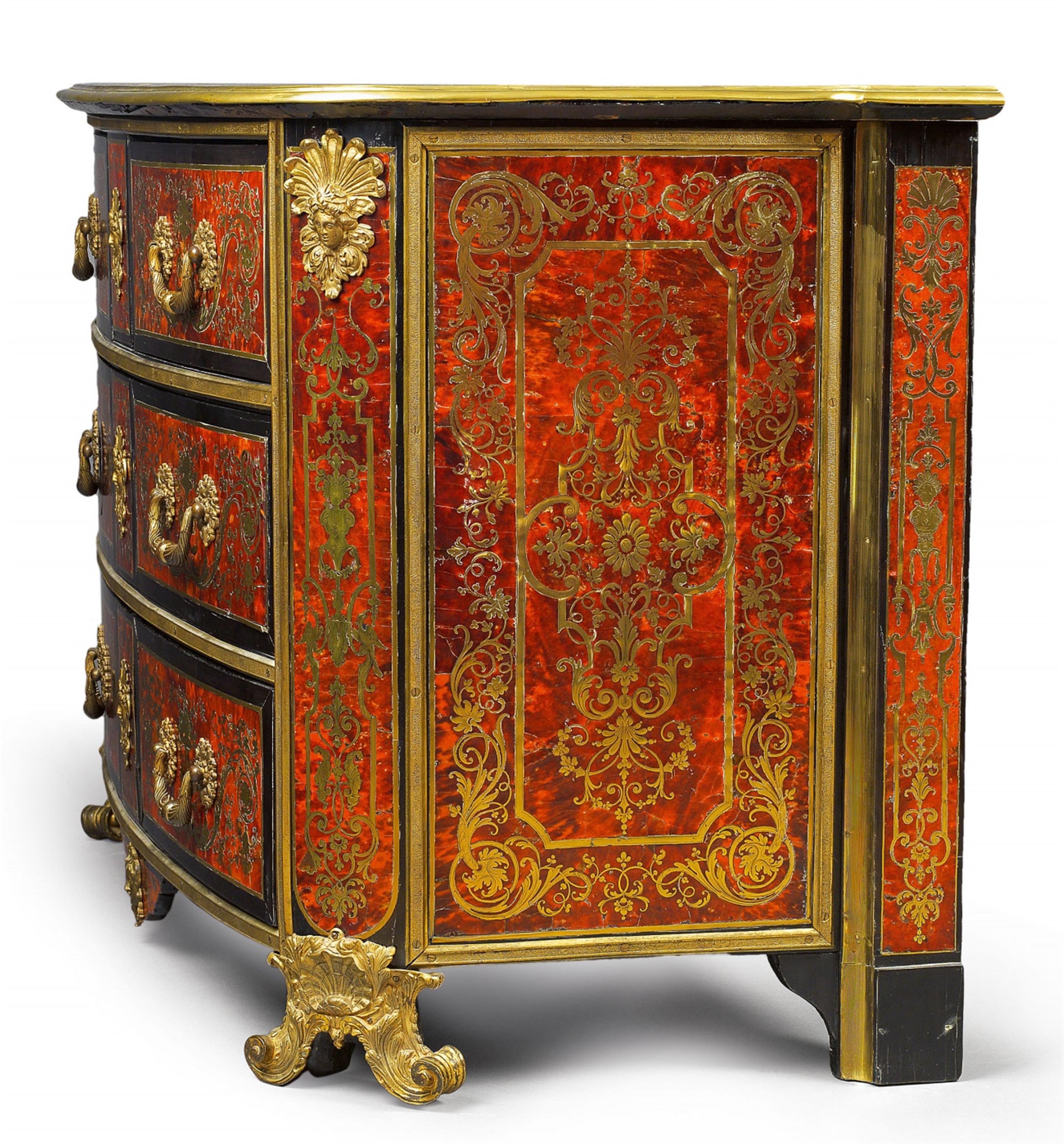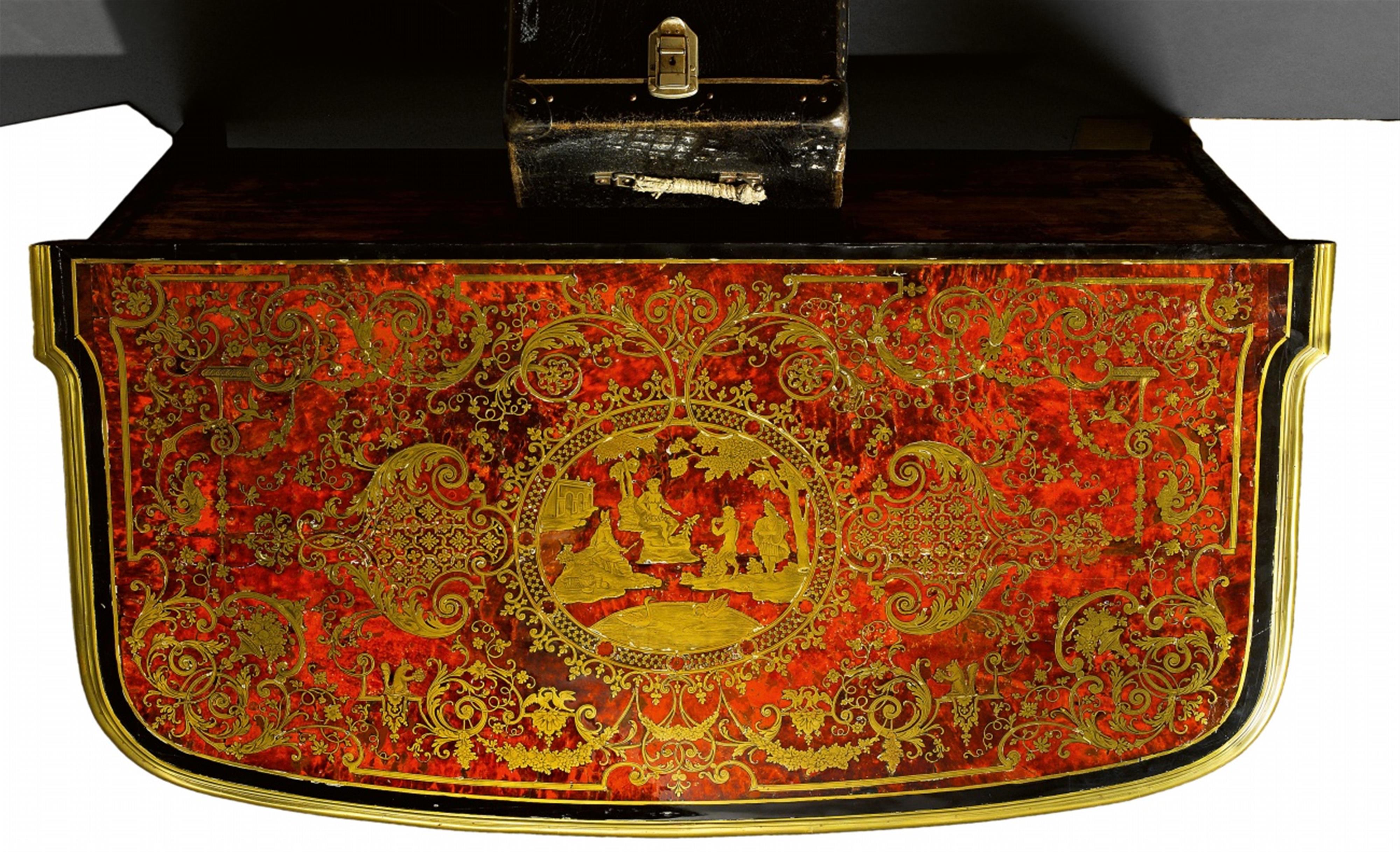An important Parisian Louis XIV commode attributed to Nicolas Sageot
Ormolu and brass mounted and inlaid with tortoiseshell, engraved brass and ebony on softwood and oak. An important courtly cabinet with three drawers designed to appear as six drawers. The centre and rounded angles accentuated with marquetry and bronze mountings. The back angles breakfront. All elements separated with bands of brass. Older restorations over cracks and losses, the brass inlays warped in places, traces of glue, the back panel replaced. H 81, W 133, D 65.5 cm.
Ca. 1710.
This elegantly formed piece of furniture with red tortoiseshell premierpartie Boulle marquetry and perfectly matched mountings is related to a significant number of near identical pieces from the workshop of Nicolas Sageot. Despite how well known these pieces are, it was still not easy to securely attribute them to Sageot. Very few stamped pieces by this maker are known, and his designs follow the same contemporary fashions as those of his competitors. Therefore, some works were originally attributed to Noel Gerard.
The present work corresponds to the recently established typology of Sageot´s furniture. The drawers are all decorated with the same identical symmetrical marquetry that is found on the sides of the piece. The pattern is formed of stylised tendrils populated by tiny insects. A similar style is used for the top, with floral festoons and strapwork interspersed with animals and mascarons surrounding a central medallion depicting Midas judging the music competition of Apollo and Pan. In the story Apollo wins, but Midas doubts this, and Apollo transforms his ears into those of a donkey. The marquetry follows designs by Jean Bérain.
Nicolas Sageot became a master in 1706, and is considered one of the most accomplished cabinetmakers of his time alongside André Charles Boulle. He married Marie-Brigitte, the daughter of the cabinetmaker Jacques Roussel, in 1711. He closed his workshop and sold off its contents in 1720 after becoming mentally ill, remaining in an asylum from 1723 until his death in 1731.
Important pieces of furniture by Sageot can be found in the Musée National de Château Versailles, the Musée du Petit Palais, the Royal Palace in Stockholm, the Bayerisches Nationalmuseum in Munich, the Residence in Ansbach, the Victoria & Albert Museum London, the Wallace Collection, the Rijksmuseum in Amsterdam and the State Hermitage Museum in St. Petersburg.
Literature
For this cabinetmaker cf.: Kjellberg, Le Mobilier Français du XVIIIe Siècle, Paris 1989, p. 807 f. An almost identical piece in contrepartie auctioned by Sotheby's, London, 15th July 2015, lot 14. Cf. the top of a bureau plat with almost identical contrepartie décor in the Wallace Collection in London, in: Hughes, The Wallace Collection, Collection of Furniture, vol. 2, London, 1996, p. 793. A further cabinet attributed to Nicolas Sageot with almost identical décor to the front kept in the Ansbach Residence, published in: Pfeil, Die Möbel der Residenz Ansbach, Munich, 1999, no. 5.






